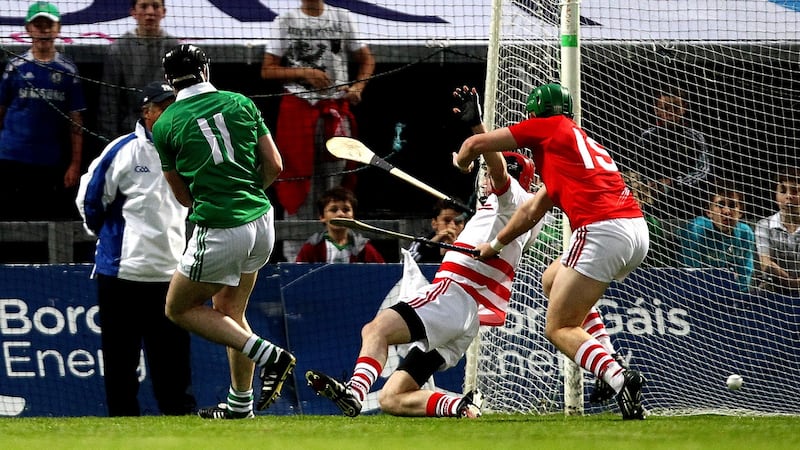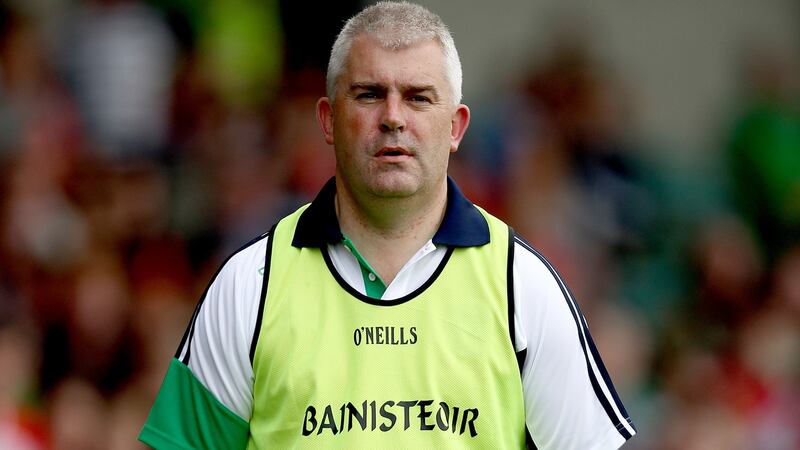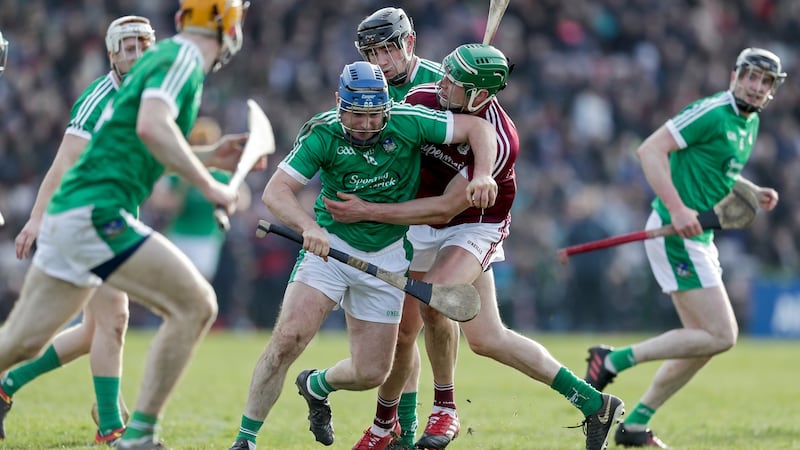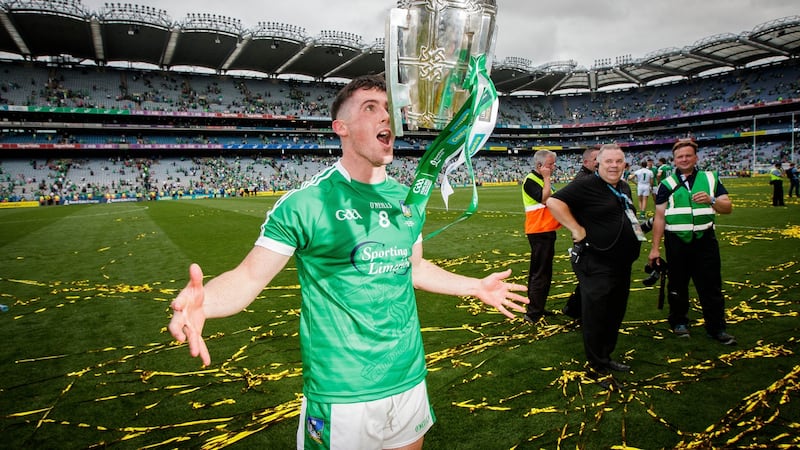When the final whistle went after the 2011 Munster Under-21 hurling final, the scenes of relief and joy on that August night were primal. It took extra-time and four Limerick goals and the locals in the crowd of 8,000 didn’t disguise what beating Cork and winning something meant.
It was a chink of light through a hugely bruising and volatile period for Limerick hurling. In the 2009 senior All-Ireland semi-final, their neighbours Tipperary had rained down a scarifying 6-19 to 2-7 dismissal. In 2010, Dublin, whom they had beaten in the championship the previous summer, piled on 6-30 in a league game during a period when many first team members were boycotting the squad. From the outside, it was a time of crisis and disenchantment for Limerick hurling. But underground, things were growing. That 2011 win was something real and tangible and a permanent step forward.
“When you look at it, go back to ‘05 or ‘06 when the underage academy was started by Shane Fitzgibbon, Ger Hegarty, Mike Galligan, Frankie Carroll, myse. . . a lot of ex-players were all involved in coaching by then,” says Leo O’Connor, the manager of the under-21 team that evening.
“Tony Roche had done a lot of work in the county board and Mike Riordan was new in as county secretary. We were kind of given the freedom to develop these kids. And it meant we had players in from smaller clubs too. We searched the county in those years. We had a squad of 48 together.
“So the players that were there in 2011, eight of ‘em went on to play senior hurling with Limerick. And four of that squad won senior medals in 2018 – Declan Hannon, Graeme Mulcahy, Shane Dowling and Kevin Downes. We always said when we had meetings that we were looking for three or four from from each squad to go on and play senior for Limerick. We got eight from that squad. So the ground work for this probably started at that stage.”

O’Connor works as the business development manager for the Clare Champion these days and he is also the manager of the Offaly minor team this year. So he works, coaches and is native to three hurling counties who are constantly trying to better their lot. His Offaly team plays against Kildare at noon on Sunday in Newbridge: at the very least it will keep his mind of later that afternoon. Like every Limerick hurling person, O’Connor is thrilled with the sensational flip in fortunes for the senior team over the decade. But he isn’t entirely surprised. This has been a slow burn.
Four years after the U-21 Munster title, O’Connor managed the Limerick minors. He was perfectly placed to see who was coming through.
Viewed from a distance, Limerick under John Kiely moved across the hurling sky like a comet in 2018
“I was manager of a team when at under-14 when Declan Hannon walked into the academy. Nickie (Quaid) was a little bit older. He was part of my under-21 squad in 2009 and 2010 that was beaten by very good Clare teams at the time.
“But Kyle Hayes, Seamus Flanagan and Peter Casey were on that 2015 minor side. When you are throwing players of that quality into the mix along with the talent already there, you are constantly improving your situation. And it became very hard to get on a Limerick hurling panel. Whereas before fellas could maybe come along and enjoy the ride.”
Comet
Viewed from a distance, Limerick under John Kiely moved across the hurling sky like a comet in 2018. They turned all heads. It seemed sudden. On the last Sunday of January, they played Laois in the league. 1,460 supporters showed up at the Gaelic Grounds. As revolutions went, it was a quiet beginning. Aaron Gillane made his debut and marked it with a 0-11 haul. Still, the world was looking elsewhere. By March 11th, Limerick had a perfect record and came to Salthill for a promotion game out of Division 1B against the All-Ireland champions. They trailed Galway by eight points at half-time.
“We were in Division 1B for so long and we fecked up on so many occasions trying to get out of it,” says Richie McCarthy, who played fullback that day.
“We took it two matches at a time. In previous years we were maybe thinking about the promotion game too far ahead and maybe stumbled. And against Galway, yeah, we didn’t start well. But John had instilled such a winning mentality even at that stage and we had learned not to panic in any situation. And we had such serious training done by that stage of the year.”

The meaning was etched all over Kiely’s features on the field afterwards. “Absolute relief,” was how he put it before outlining how Limerick’s hurling fraternity were sick of living in the underworld of the league. “Tired of not being involved in the bigger games and having the bigger teams.”
The evidence was there even then. Limerick had made the metamorphosis, almost unseen, into the real thing. The same two teams would contest a riveting All-Ireland final that August and this time there would be no late surprises from the carnival grotesque. They held out. Riche McCarthy came into the maelstrom of that final with 20 minutes left to go.
By then, the Blackrock man had been well established as a revered figure in Limerick hurling culture. He was eye-witness to the radical flip, coming in as a youngster to the senior squad for the hugely turbulent seasons of 2009 and 2010 and establishing himself as they won a Munster championship under John Allen under 2013.
“It was absolutely electric that day in 2013. And we felt we were on to something but we just didn’t perform in the semi-final against Clare. We had a long lead into the game and it didn’t help. And I think we wanted it too much. It got to the team. We played with too much emotion. I remember there was a pre match video and I was so up for the game that it kind of got to me. I was nearly crying before I got out onto the field. We got back the following year to a semi-final with TJ. But those defeats knocked us back a bit until John Kiely took over.”
On the sublime late summer afternoon in Croke Park – golden sunshine, a full house, super-saturated colour - that Limerick edged out Cork to make it to the All-Ireland final, Kiely began his post match media conference with a stark request – or instruction – not to contact any of the players. His anxiety was informed by an absolute determination that hype would not spoil this latest harvest.
In the two years since their championship, the Limerick squad has been heavily guarded. The legacy of the 1994 All-Ireland final has hung around as a cloudy backdrop to the Limerick story for longer than it should. The summary on that period and that day is that an excellent Limerick team somehow missed out on a championship they should have had. The wait should never been as long.
“We should have got over the line, no doubt,” says O’Connor, a Limerick player that day.
“But personally I learned more from being beaten in 1994 than I would have done because I learned to never take anything for granted again. 1994 sticks in everybody’s mind.”
O’Connor played in with a city club: Claughaun. His career actually overlapped with that of Eamonn Cregan: they played on the Claughaun club side that won the county title in 1986: O’Connor as a teenager, Cregan then 41. It was the club’s last senior title.

It was, of course, the bitterest of ironies that Cregan was managing Offaly - whom he took from nowhere – against his beloved Limerick that day in 1994: it made the pain almost exquisitely sweet. Cregan is one of the county’s finest ever hurlers and his fingerprints are over so many good things that happened to Limerick hurling.
Before the 2018 All-Ireland final, he took PM O’Sullivan, hurling writer with the Irish Examiner, on a fabulous tour of the hurling quarters of Limerick city, some of which were by then more imagined than real. “We were born in the city and you never saw a young fella walking with a hurley in the city in the 1950s, because we had an inferiority complex.”
Revival
And the strange thing is that Limerick’s hurling revival has coincided when the city game is nowhere near as evident as it once was. Several city clubs have simply disappeared, with Treaty Sarsfields, county senior hurling champions three times in the 1950s being the most prominent of those. Claughaun are now an intermediate side.
“The inner city itself is probably a soccer city,” says O’Connor.
But the south side of the river, I suppose, has become a soccer stronghold
“Where you have Pike Rovers, Jamesboro, Fairview Rangers won the FAI junior club. Claughaun has two GAA clubs in the one parish. That area is probably known as a soccer area. Obviously Na Piarsaigh are the north side of the city and have become a huge club. But they did it at the right level. The progressed from under age.
“But the south side of the river, I suppose, has become a soccer stronghold. Between the Crescent Shopping Centre and the Parkway Shopping Centre, within a two mile radius, there were 23 soccer clubs. So it is a challenge facing the Limerick board. I won 26 county medals with my club. That wouldn’t be possible now. Soccer became the easier game to play. The Sky Sports influence. That’s when it seemed to gravitate towards soccer. And you have Richmond rugby club as well. They are all pulling from the one pool of kids.”
But in a year dominated by the nuclear potential of Dublin GAA, it must be tantalising for Limerick’s hurling custodians to wonder how good things could become if they could fully revive all quarters of the city. Maybe it doesn’t matter so much now that such strong foundations are in place.
“Oh, I think it does,” O’Connor counters.
“Look at Shane Dowling, born and raised in Caherdavin on the outskirts of the city. . . he always had that bit of confidence and arrogance. Look at Cork with Glen Rovers and Blackrock and Finbars, all very strong Cork clubs. . . they brought a bit of city confidence and I think that is what Cork was built on through the 1970s through to the 1990.”
Waterford have been this year’s comet story. O’Connor met Liam Cahill at a charity event just before he was appointed to the Waterford job. He is full of admiration for what he has achieved over this curtailed hurling year.
“It has been spectacular and whatever Liam Cahill’s magic wand is, you have to take your hat off. I do think they have to try something different against Limerick but I wouldn’t be surprised if they can raise the intensity even more.”

But Limerick are in a rare and exalted place, going into an All-Ireland final as favourites with a team expected to feature in future finals. This is their time. Richie McCarthy was forced to retire in 2019 but he walked away having seen the highs and lows with a Celtic Cross and a sense that the dressing room would be okay. His abiding memory of his final seasons is of the team sessions with Caroline Currid, the sports psychologist who has had a profound influence on Kiely’s group.
“They are tough meetings. Caroline is unreal in what she does. It is about knowing the group and the problems that people face in their lives as well as in hurling. We never panicked that day and stuck to our process. It was nerve wracking. All your emotions of playing 11 and 12 years come out in 20 seconds.
Two years on, Limerick will chase another senior championship in the depths of winter in an empty stadium. It all feels on a secure footing. And it goes back. John Kiely, the senior manager whose uncompromising schoolmasterly style has been the front of house image for this team, was a selector with Leo O’Connor for that under-21 final nine summers ago. O’Connor will be watching from a distance to see how this strange, special hurling winter finishes up. But it’s safe to say that the anxiety has left Limerick hurling.
“ We were trying to replicate structures but now I think people will look to Limerick. We have an unbelievable set-up and you couldn’t beat that. We know if we hit our metrics we have a good chance of winning. It is about hitting their own goals rather than the opposition. What John Kiely and Paul Kinnerk have done has been fabulous and it is great to be able to look at it.”
They have travelled light years in a decade.


















